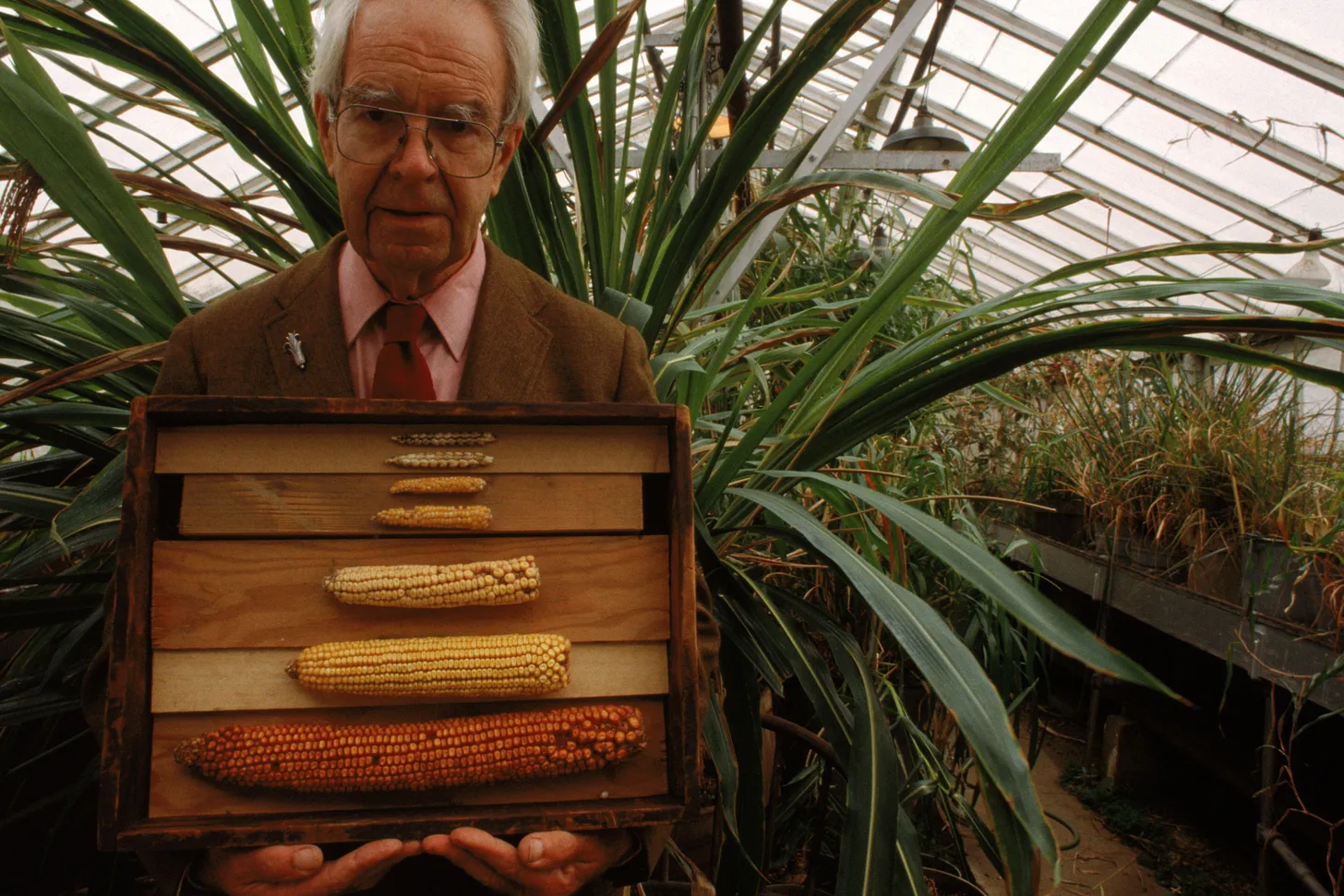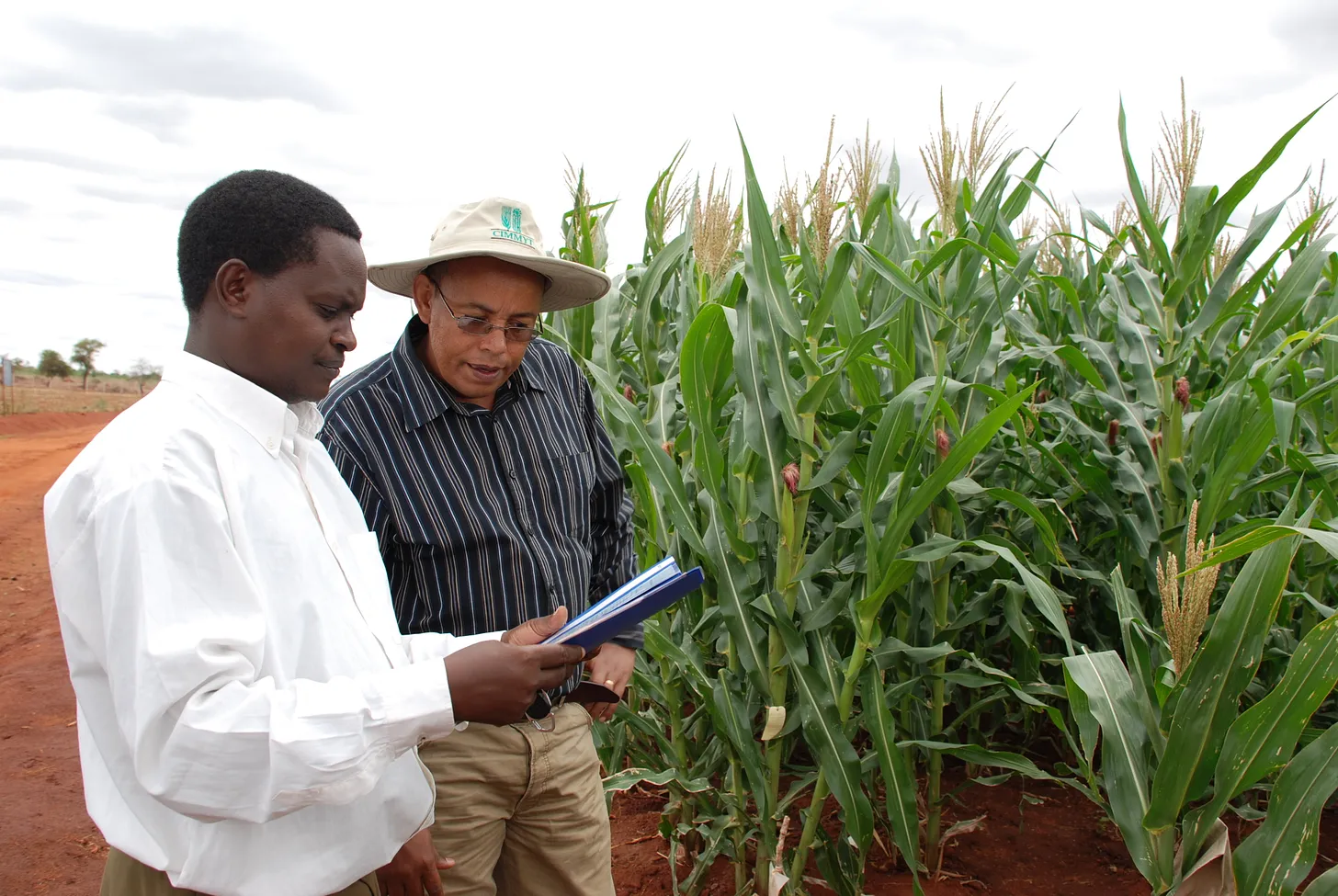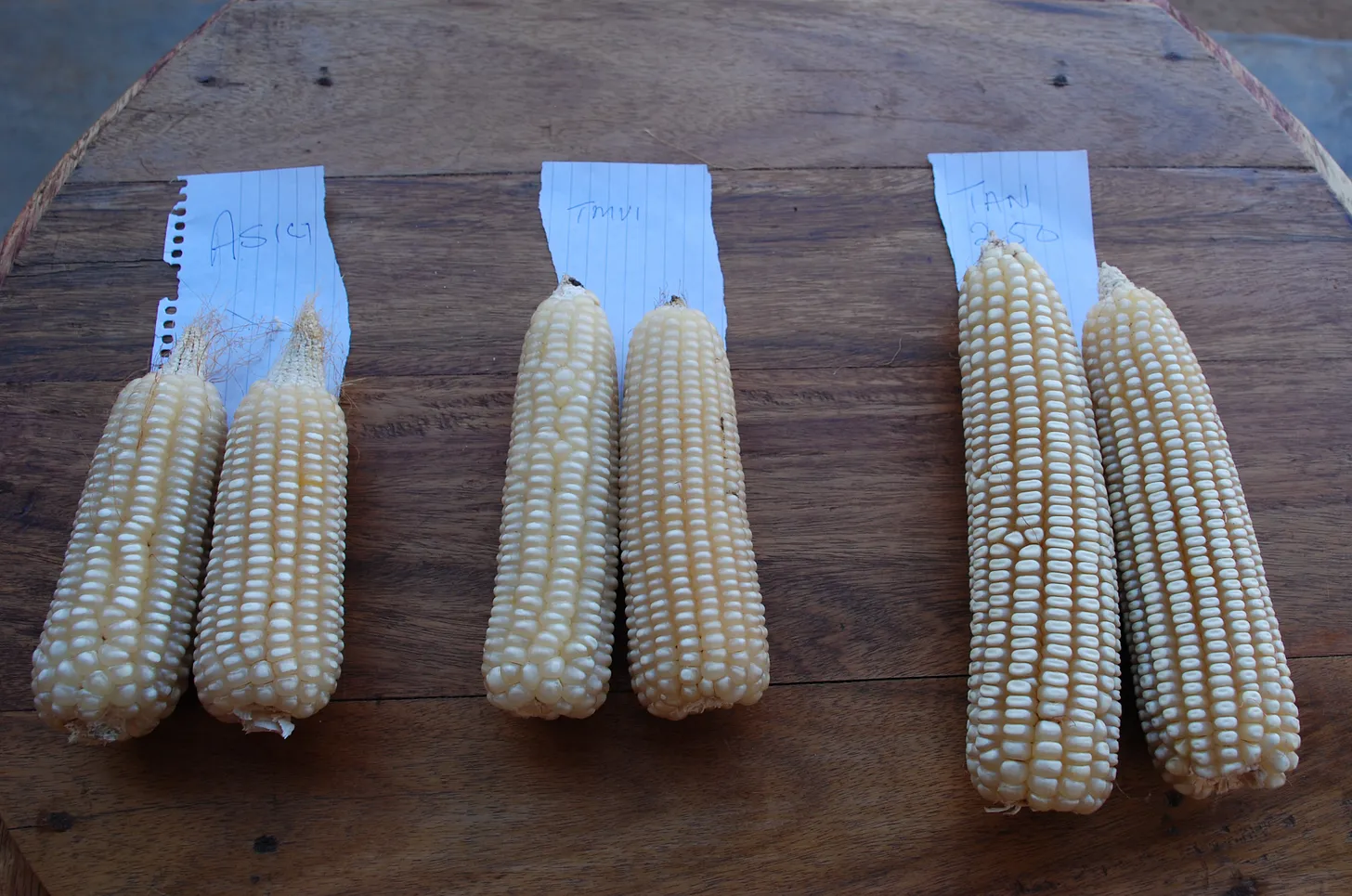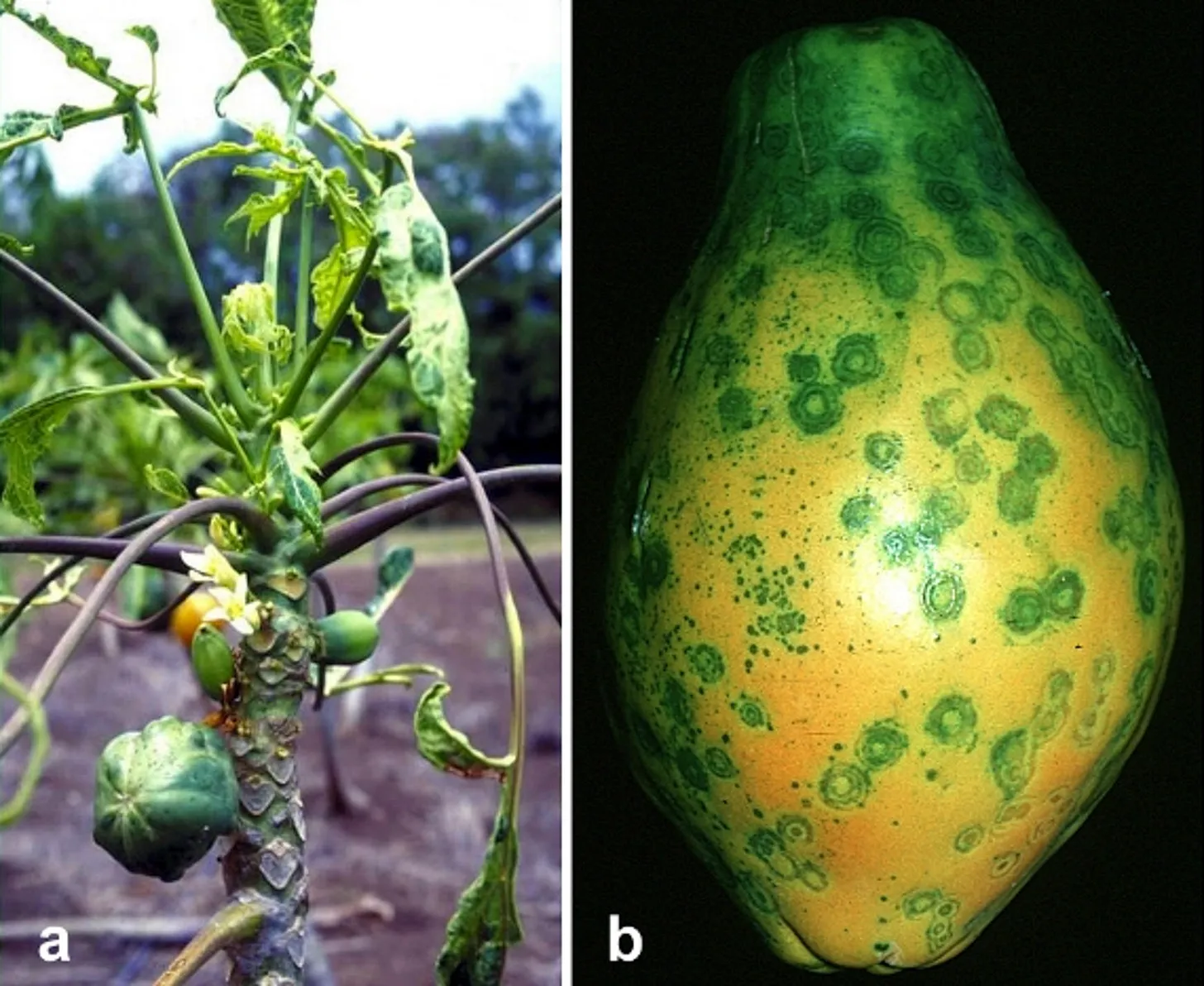Why Nigeria Accepted GMOs

Around 10,000 years ago, nomadic hunter-gatherers started to pick and eat the seeds of grasses, and the world hasn’t been the same since. The fertile rivers and reliable sun of the Middle East, China, and South America nurtured vast grasslands. The humans who settled there quickly developed a keen eye for harvesting and cultivating the largest, tastiest seeds, which meant that the following season, only those got sown. They did the same the next year and the next, over the generations, until we arrived at modern crops.
Around the Levant, this process of selecting for the most robust seeds created wheat; along the floodplains of the Yangtze, it created rice; and amidst the tropical foothills of the Mayan lowlands, it created maize. These three cereal crops alone make up around half of all the calories consumed by humans, and they constitute an even larger part of the diet in developing countries.
Today, climate change presents a steep challenge for agriculture, a practice that provides most of our food but, in return, demands arable land (which is decreasing), water (which is becoming less available), nitrogen (which, through its industrial byproducts, is a major pollutant), and protection from insects, disease, and weeds (often requiring pesticides, which are damaging to the environment and human health).1 Meanwhile, the world’s population is still growing, and around 2100, when global temperatures are projected to peak, there will be several billion more people on the planet.
As someone who has spent the last five years researching cereals, I’m all too aware that the challenge presented to modern plant scientists is almost paradoxical: to significantly increase cereal yields and feed the burgeoning population while using less land, water, nitrogen, and pesticides.

Fortunately, our understanding of evolution, genetics, and molecular biology has improved over the past 10,000 years, meaning we no longer rely just on visually apparent traits. We have now sequenced full genomes of all the major cereals and can map phenotypic traits like grain size or drought tolerance to individual genes. Furthermore, gene editing technologies such as CRISPR allow us to precisely edit these genes to create improved varieties. Genetic Modification (GM) technologies have already been used to make cereal varieties like high “nitrogen use efficiency” rice, which requires less fertilizer, or “Bt maize,” which produces a natural pesticide, reducing yield loss and pesticide use.
Before 2011, the majority of GM crops were grown in the global North; in countries like the U.S., Canada, and Spain. But today, GM harvests in the developing world have outstripped it. “By 2023, the disparity between developing and developed countries reached 19.8 million hectares,” according to a 2024 review article,” with developing countries accounting for 54.78 percent of the total GM crop area.”
Indeed, much of the pioneering work on the adoption and regulation of GM crops is being done in the Global South, in countries that cannot afford to be risk-averse when it comes to agriculture. But the Global South, of course, is not heterogeneous. Each country represents a unique combination of history, political landscape, and cultural relationship with agriculture. Still, Global South countries can generally be said to possess low levels of food security, rapidly growing populations, and a high vulnerability to climate change.
One of the most impactful examples of the shift towards GM adoption in the Global South can be seen in Nigeria. A large, climate-stressed country, Nigeria is a major agricultural producer of, among other crops, cowpea, an orphan crop nicknamed “poor man’s meat” for its high protein content. It forms an essential part of the diet for around 200 million Sub-Saharan Africans, and Nigeria is its largest producer. However, yields are being decimated by drought and a variety of pests that have become more prevalent with shifting climes.2
Like almost all of Africa, prior to 2019, Nigeria had never grown any kind of GM food crop despite having an agricultural sector that constituted 22 percent of its GDP. But that year, the Nigerian government approved the cultivation of Bt cowpea. The Bt cowpea proved popular with farmers and is estimated to add $336 million to the Nigerian economy over the next 25 years. More importantly, the governmental bodies responsible, the National Biosafety Management Agency (NBMA, which regulates GM crops) and the National Biotechnology Research and Development Agency (NBRDA, which conducts research and field trials), demonstrated that they could safely develop and regulate Nigeria’s first GM crop for human consumption.
And success with Bt cowpeas quickly paved the way for other GM crops.

In 2024, Nigeria started growing its first GM cereal — TELA maize3 — which has proven resilient to both drought and several of the region’s most pernicious insect pests. Indeed, the TELA maize roll-out has been an epitome of scientific collaboration and realizing the “promise” of GM. Funding from groups like the Bill and Melinda Gates Foundation and USAID supported an international team of scientists from developing countries in creating crop varieties tailored to their own needs and environments, all while licensing the resulting seeds royalty-free.
The story of GM acceptance in Nigeria is worth a closer investigation, both for nations that may need to adopt GM crops to protect their agriculture against climate change, and for the countries that rely on their exports for both human food and animal fodder.
{{signup}}
The Nigerian Journey
The TELA maize project began back in 2008. Around this time, scientists at the CIMMYT cereal research institute in Mexico — together with collaborators in eight African nations —were researching a new GM variety of “water-efficient” maize called WEMA (Water Efficient Maize for Africa) that could better survive droughts.
One of the ways drought stunts growth or even kills plants is by preventing RNA from folding correctly, disrupting protein production. Water can form hydrogen bonds with the hydroxyl groups that form the backbone of RNA, and also interact with the hydrogen bonds between RNA bases. Dehydration thus destabilizes the RNA structure and causes it to fold incorrectly, preventing it from carrying out its normal functions. To remediate this cellular stress, researchers introduced the “cspB” gene, encoding a chaperone protein that stabilizes RNA and helps it to fold correctly even under drought stress.


However, this new GM maize was too successful. “After [a] drought, insects had no better vegetation for miles … We lost five different field trials to the stemborer,” explained Dr. Sylvester Oikeh, who worked on the project. In other words, researchers had prevented the maize from succumbing to drought, only for it to become the healthiest, most delicious-looking plant to pests for miles.
Fortunately for the scientists working on WEMA, insect resistance was already one of the most widely understood and used GM modifications in the world. “Bt” refers to the genetic modification that allows a crop to produce a natural protein insecticide, decreasing the need for chemical sprays.
It was first introduced in the context of Bt cotton, which now makes up as much as 90 percent of all cotton grown in India, China, and the U.S. It remains the world’s most successful GM modification, added to plants from tomato to soybean, reducing the world’s chemical pesticide use by almost half a million tons from 1996 to 2016. Bt is commonly inserted into the plants and “stacked” alongside other genes, thus creating crop varieties with multiple modifications. TELA, for example, contains both drought-resistant cspB and pest-resistant Bt genes.
Initially, Nigeria had not been part of the WEMA/TELA research project. In 2008, the country’s sentiments were still predominantly anti-GM. However, worsening climate conditions and pressure from scientists, struggling farmers, and a collapsing textiles industry pushed the country towards a breaking point.4 Between 1994 and 2005, for example, around 64 percent of Nigeria’s textile mills closed, and the looming collapse of the industry left the government little option but to permit Bt cotton in 2018. It was hoped that Bt cotton could increase cotton yields from the troublingly low 0.6-0.9 tonnes per hectare, while cutting pesticide spraying in half. Since then, Nigerian Bt cotton has been shown to produce 4.1 to 4.4 tonnes per hectare.
These encouraging results led Nigeria to ask to join the TELA project in 2019, and Nigeria’s Ahmadu Bello University became one of its major research hubs. The following year, the NBMA published guidance on genome editing (GE) technologies such as CRISPR, the first such guidelines published by an African government.
Before Nigeria could commercialize TELA maize, however, it needed to conduct extensive field trials. These ran for five years, and the data collected from the final stage trials showed maize yields increasing by as much as 19 percent more than the same maize lines without the Bt gene, and 40 percent more than other popular commercial varieties, when tested under real pest pressure. “The farmers were so excited when they saw the outcome,” said Oikeh, “There was a three-week drought when everything else died, and the TELA maize just stayed there.”
Nigeria is now conducting trials with several other GM crops in various stages of development and safety testing. As one of the world’s largest consumers of rice and Africa’s largest rice producer, Nigeria has been testing GM rice with improved Nitrogen Use Efficiency (NUE). This variety has been predicted to increase yields by as much as 25 percent, while reducing the use of nitrogen fertilizers. The NBMA has also started trials on the VIRCA Plus project, which aims to produce a GM cassava with increased iron and zinc levels, to help fight key nutritional deficiencies responsible for childhood stunting and high malarial mortality in West Africa.
Yet even successful field trials are not enough on their own to drive a shift to GM agriculture. The true adoption comes when farmers and consumers feel like GM is safe and effective.
Therefore, alongside the commercialization of TELA maize, the Nigerian government, in collaboration with NGOs like the Open Forum on Agricultural Biotechnology in Africa (OFAB) and the African Agricultural Technology Foundation (AATF), put greater effort into outreach and education to farmers and the Nigerian public. Farmers were consulted on their needs and concerns with WEMA and TELA maize, not only once it was ready for commercialization, but during the development stages as well. “We also took politicians to the field to see the technology for themselves.” Dr. Oikeh explained. Seeing the education work as an essential and continual part of the GM process, he added: “Right now we are working on ways to help Nigerian farmers share their experience of TELA with their peers.”
In tandem with this outreach, the formation of a regulatory body like the NBMA also helped build public trust. Since its creation in 2015, the NBMA has monitored GM field trials, conducted lab analysis of GM crops, and developed plans to address potential risks associated with GM. The group inspects research facilities to ensure safety measures are followed and field trials to ensure the GM trial crops are contained. Following the commercialization of a GM crop, they meet with farmers to register their honest opinions and track yield changes, hoping to ensure greater independence from agritech companies’ marketing for performance statistics.
The key to successful GM adoption appears to combine science-based biotech regulations, rigorous testing, and expansive education: all strategies that rely on government trust. However, this poses a significant problem in the Global South, where many countries that would benefit most from GM have low levels of government trust.
The “Democracy Index” is a calculation that takes into account government trust, political participation, and government functioning. While Western Europe enjoys a mean democracy index of 8.4, more agriculturally dependent regions in the Global South, like South America and Sub-Saharan Africa, have indices of 5.6 and 4.0, respectively.
In general, a higher democracy index correlates with greater GM acceptance, although large differences exist between individual nations.5 South America contains both pro-GM and GM-skeptical nations. When comparing the two using the Democracy Index, however, the pro-GM countries have a consistently higher Democracy Index (6.8) than those that ban GM (4.4). Similarly, the mean Democracy Index for Sub-Saharan African countries that cultivate or are currently legislating towards GM crop cultivation (4.7) is higher than those that ban it (3.5).
This suggests that fostering democratic accountability is not simply a political good in itself, but also a precursor for enabling science-based agriculture. For countries looking to promote GM, the priority may not be exporting “democracy” wholesale, but supporting governments in building credibility, transparency, and public trust — the very conditions under which new technologies can take root.
Of course, GM-skeptical countries in the Global North, like those in Europe, have democracy index values significantly higher than almost any pro-GM developing country. But these countries also have the privilege of choice. Compared to South America or Sub-Saharan Africa, these countries import more of their food, have economies less dependent on agriculture, and are more capable of absorbing fluctuations in food prices as a result of climate disasters.
This brings up another critical point about why adoption in places like Nigeria surpasses that of these developed countries despite their good governance and technological capabilities — incentives. Although the Global North has invested in high-margin GM opportunities, these countries haven’t turned to them for non-commodity staple crops because these crops simply aren’t big money makers. While modifications like Bt might reduce labor and input costs in developed countries, there has been insufficient evidence that genetically modified plants increase yields in the markets where they have now been used for decades.
By contrast, when people invoke the increased yields GM delivers in places like Nigeria, this is usually about preventing loss due to crop failure and pests. TELA maize was designed to withstand abiotic stress, and while researchers and farmers are hopeful that it will also be more highly productive even when there is not a severe drought, that remains to be seen. All that has been verified to date from data coming out of these current trials is that the GM crops are faring better than their non-GM counterparts.
Closely related to incentives, the GM rollouts in Nigeria also demonstrate where support stems from when need is great. Since countries in the Global South have to protect their populace from starvation and economic devastation from crop failure, public sector engagement is the driving force behind GM cultivation. This is not to say that absolute need is the only factor at play, but to emphasize that the forcing functions differ between a country like the U.S. and Nigeria. As the U.S. and other Global North countries increasingly feel the effects of climate on agriculture, however, their incentives might shift towards exploring GM, not so much to produce unbridled abundance, but to avoid harm.
A Globalization “Problem”
Nigeria is not alone in its incipient embrace of GM technology. Other countries that previously had blanket bans on GM are now trialing their first GM varieties, and countries that previously had limited GM cultivation are expanding the number of crops and varieties they permit. In 2017, Argentina, Bolivia, Brazil, Chile, Paraguay, and Uruguay signed a joint declaration aiming to unify their GM policies, resulting in more consistent, science-led assessment of new gene-edited crops across much of South America.
This acceptance seems bound to spread as the world’s agriculture is heavily globalized. While it is inspiring to see Global South nations using GM to protect their own food security, the adoption of this technology is not an issue for them alone. Even countries in the Global North that refuse to grow GM themselves import huge quantities of agricultural products, more and more of which are GM.
For instance, the notoriously anti-GM EU now imports 36 million tons of GM soybeans a year and recently greenlit the import of two new GM maize varieties, though only for animal feed. Or take Japan, a major importer of papaya from Hawaii. In the 1990s, Papaya Ringspot Virus almost wiped out Hawaii’s native Papaya industry, which spiked prices in Japan. Fortunately, researchers in Hawaii and at Cornell University had been working on a virus-resistant GM papaya for 14 years. In 1998, this variety was legalized and is widely considered to have single-handedly saved the Hawaiian papaya industry. Japan was more than happy to import the new virus-resistant GM variety and bring its food prices back down.

Another potential impact of growing GM acceptance around the world is that GM demand might not wait for GM approval and proper regulation. Borders are porous. Brazil first legalized GM soybeans because so many farmers were smuggling seeds across the border from pro-GM Argentina that there was no other choice but to admit that a significant amount of the country’s soybeans were already GM. Dr. Oikeh shared a similar observation regarding West African farmers. “I bet you farmers will come from Niger and buy the seeds … You can have police checking luggage across the border, but a pack of seeds is very small.”
It is unreasonable to expect impoverished farmers not to protect their livelihoods as they watch their neighbors benefit from GM technology. In 2022, after years of severe droughts, Kenya’s government reversed a 10-year ban on GM crops. Uganda shares a border with Kenya but has not yet joined them in permitting GM crop cultivation — a choice that will have serious consequences. “Now that the Kenyans are free to grow GMOs, our farmers [in Uganda] will definitely look across … as their counterparts in Kenya will be reaping bountifully from their newfound seeds,” says Grace Lonyo Ocheng, principal Nutritionist at the Ugandan Ministry of Health. This is not only likely to increase the flow of smuggled, unregulated GM seeds into Uganda, but also decrease the market for Ugandan crops in East Africa, as Kenyan crops improve and the nation grows less reliant on imports.
Examples such as these emphasize the arbitrary yet consequential nature of borders. They also highlight that nations cannot naively think they will be unaffected by how GM agribusiness plays out elsewhere. Food supply chains and commodity exchanges are globalized, complicated systems, and proactive regulation is the sensible response. When a transgenic crop is developed in the U.S., regulated in the European Union, and squirreled into Niger, we must ask ourselves if we can’t surely devise a more efficient and reasonable approach.
New technologies, whether automated cotton mills, internal combustion engines, nuclear fission reactors, microchips, or GM crops, are all solutions to problems that may themselves create yet other problems. But whenever a new technology has improved the world, it has been through actively managing the negatives that arise rather than through discarding the technology entirely.
Pointing to the bottlenecks preventing us from fully benefiting from a new technology like GM is the easy (even fashionable) part. Actually removing them requires something that has been harder: we must allow GM technology to become part of ordinary life. It doesn’t deserve the fearmongering it continues to receive, nor is it a magic bullet. It is simply a tool. And as nations like Nigeria increasingly turn to this tool, we will become better able to assess the extent of its benefits and learn how to improve upon them in light of what we discover.
{{divider}}
Dr. Alex Wakeman is a writer and researcher based in Leeds, UK. His PhD focused on plant perception of time and space.
Thanks to Eli Hornstein, Modesta Nnedinso Abugu, and Samuel Acheampong for providing feedback on this draft. Thanks to Sylvester Oikeh and Abraham Manalo for helpful discussions. Lead image by Ella Watkins-Dulaney.
Cite: Wakeman, Alex. “Why Nigeria Accepted GMOs.” Asimov Press (2025). https://doi.org/10.62211/55gf-71kw
Footnotes
- With that said, the Green Revolution of the 50s was able to use less land by using more water, fertilizer, and pesticides. Over the passing decades, however, the plentitude of these resources has changed. One example is our use of groundwater. A global analysis of ~170,000 wells shows rapid and widespread declines (>0.5 m/yr) in the 21st century and that depletion has accelerated in ~30 percent of the world’s aquifers — especially in dry, crop-intensive regions. So while more-water intensive strategies may have aided agricultural productivity during the Green Revolution, the same approach would be feckless today given worsening droughts, draining aquifers, and rising temperatures.
- Bruchid weevils, for example, lay their eggs on cowpea pods, and the hatching larvae burrow into the seeds, leaving them hollow and powdery.
- TELA maize derives its name from the Latin word for protection — tutela.
- A set of conditions likely to repeat itself across the developing world over the coming years.
- The global correlation between Democracy Index scores and GM adoption is weak (r ≈ 0.2) — in part because many nations with high democracy indices, especially in the European Union, have not accepted GMOs — but regional patterns are stronger. The contrast is particularly evident when comparing countries within South America and Sub-Saharan Africa, where pro-GM nations do show consistently higher democracy scores than their GM-skeptical neighbors. Even so, the democracy-GM relationship should be understood as one contextual factor among many, rather than a universal predictor of GM policy.
Always free. No ads. Richly storied.
Always free. No ads. Richly storied.
Always free. No ads. Richly storied.